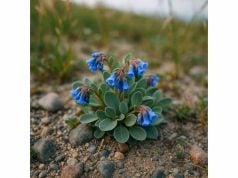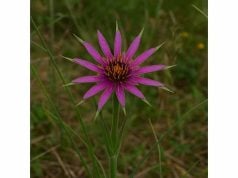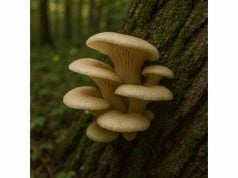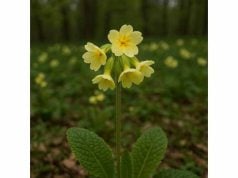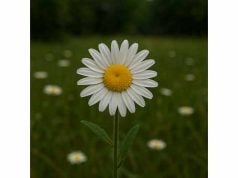
Osage Orange is a remarkable tree native to central North America, celebrated not only for its striking, bumpy green fruit and robust wood but also for its diverse applications in traditional herbal medicine. Rich in bioactive compounds such as flavonoids, tannins, and terpenoids, Osage Orange has been used historically to alleviate inflammation, support skin healing, and even act as a natural insect repellent. Its potent antioxidant properties and antimicrobial effects further contribute to its reputed therapeutic value. Today, Osage Orange finds a place in both natural remedies and modern wellness practices, proving its enduring significance as a holistic health resource.
Table of Contents
- Botanical Overview and Identification
- Chemical Constituents and Active Compounds
- Holistic Health Benefits and Unique Properties
- Practical Applications and Guidelines for Use
- Research Insights and Scientific Findings
- Frequently Asked Questions
Botanical Overview and Identification
Osage Orange (Maclura pomifera) is a deciduous tree belonging to the Moraceae family. Native to the prairies and river bottoms of central North America, particularly in regions of Texas, Oklahoma, and Arkansas, this tree thrives in sunny, well-drained soils and is famed for its rugged resilience. With a broad, spreading canopy and an irregular, knobby bark, Osage Orange grows up to 15–30 feet tall in its natural habitat. The tree produces a large, round fruit—often called a hedge apple or horse apple—which is rough, green, and inedible for humans. Despite its seemingly unpalatable fruit, the tree has a storied past in both traditional uses and modern applications.
Taxonomy and Distribution
Osage Orange is taxonomically classified as follows:
- Kingdom: Plantae
- Order: Rosales
- Family: Moraceae
- Genus: Maclura
- Species: M. pomifera
Historically, this species played a significant role in the ecosystem of the Great Plains. Early Native American tribes recognized its value, and European settlers later adopted its use as a natural fence when planted in hedgerows. Today, although primarily cultivated for ornamental purposes and its durable wood, the tree’s traditional medicinal and insect-repellent uses continue to be explored.
Morphological Features
Osage Orange is easily recognizable by its:
- Leaves: Simple, alternate leaves that are dark green, leathery, and slightly shiny.
- Bark: Deeply furrowed, rough, and rugged, providing the tree with a distinctive texture.
- Fruit: Large, spherical, and bumpy with a green exterior; the fruit contains numerous seeds but is rarely consumed due to its bitter taste.
- Growth Habit: A robust, spreading canopy with a somewhat irregular form, adapted to withstand the environmental stresses of its native habitat.
These features contribute not only to its ornamental appeal but also to its practical applications. For instance, the durable, dense wood of Osage Orange has been historically used to fashion bows (earning it the nickname “bowwood”) due to its exceptional strength and elasticity.
Habitat and Cultivation
Osage Orange is well-adapted to xeric conditions and can thrive in poor, rocky soils where few other trees survive. Its natural range includes open woodlands, prairies, and riverbanks, where it benefits from full sun exposure and occasional flooding. Cultivated varieties are popular in urban landscapes and parks, valued for their low maintenance, drought tolerance, and unique aesthetic. The tree’s ability to form dense, thorny hedgerows has also made it a traditional natural barrier in rural settings.
Historical and Cultural Significance
Throughout history, Osage Orange has held cultural and practical importance:
- Fencing: Its thorny branches made it ideal for forming natural hedges, protecting property and livestock.
- Wood Utilization: The resilient wood has been prized for crafting tools, bows, and even furniture.
- Traditional Medicine: Indigenous peoples and early settlers used extracts from various parts of the tree to treat skin conditions, respiratory issues, and digestive ailments.
- Folklore: The tree has been the subject of various legends and folk tales, symbolizing protection and strength.
Today, while its ornamental and timber uses are most prominent, renewed interest in natural remedies has spurred research into its medicinal properties. Modern herbalists are examining how the traditional applications of Osage Orange can be integrated into contemporary wellness practices.
Chemical Constituents and Active Compounds
The therapeutic potential of Osage Orange is rooted in its complex phytochemical composition. Detailed analyses have identified a variety of bioactive compounds that work synergistically to support health and wellness. Below is an exploration of the key chemical constituents found in Osage Orange and their respective roles:
- Flavonoids
Flavonoids in Osage Orange, such as quercetin and kaempferol, are powerful antioxidants. They scavenge free radicals, reduce oxidative stress, and exhibit anti-inflammatory effects. These compounds are pivotal in protecting cells from damage, supporting cardiovascular health, and maintaining overall cellular integrity. - Tannins
Tannins are polyphenolic compounds known for their astringent properties. In Osage Orange, tannins contribute to wound healing by contracting tissues and reducing inflammation. Their antimicrobial activity also helps in preventing infections in minor cuts and abrasions, aligning with traditional uses in skin care and topical applications. - Terpenoids
Terpenoids, including limonoids and other related compounds, are responsible for the distinctive aroma and insect-repellent properties of Osage Orange. These compounds also display anti-inflammatory and antioxidant effects, supporting the herb’s use in natural remedies aimed at reducing inflammation and enhancing skin health. - Phenolic Acids
Phenolic acids such as caffeic acid and ferulic acid are present in Osage Orange and are critical for its antioxidant activity. They help stabilize free radicals, prevent oxidative damage, and may also contribute to the herb’s anti-inflammatory properties. These acids support both internal health and the maintenance of youthful, vibrant skin. - Saponins
Saponins are glycosides with natural emulsifying properties that facilitate nutrient absorption and enhance the bioavailability of other compounds. In Osage Orange, they also provide antimicrobial and immune-modulating effects, making them valuable for both internal consumption and external applications. - Other Polyphenols and Lignans
A diverse array of additional polyphenols and lignans are found in Osage Orange, contributing to its overall antioxidant capacity. These compounds help protect the body from environmental stressors and support a healthy inflammatory response, which is essential for long-term wellness.
The synergistic interplay among these compounds not only validates the traditional use of Osage Orange in folk medicine but also opens up new possibilities for its application in modern health formulations. Research continues to explore how these bioactive substances can be extracted, standardized, and incorporated into therapeutic products to maximize their benefits.
Preserving the natural synergy of these compounds is crucial. Traditional processing methods, such as cold extraction and gentle drying, are often employed to maintain the integrity of the active ingredients. Advances in extraction technology now allow for the creation of standardized extracts that deliver consistent potency, ensuring that the health benefits of Osage Orange can be reliably harnessed in both dietary supplements and topical products.
Holistic Health Benefits and Unique Properties
Osage Orange offers a wide array of health benefits that have been appreciated by traditional healers and modern wellness practitioners alike. Its unique blend of antioxidants, anti-inflammatory agents, and antimicrobial compounds supports numerous aspects of health. The following sections detail the key benefits and essential properties of Osage Orange:
Antioxidant Powerhouse
The high concentration of flavonoids and phenolic acids in Osage Orange makes it a potent antioxidant. This activity is crucial for:
- Cellular Protection: Shielding cells from oxidative damage that can accelerate aging and contribute to chronic diseases.
- Skin Rejuvenation: Promoting a youthful complexion by combating free radicals that cause wrinkles and skin laxity.
- Cardiovascular Health: Preventing the oxidation of LDL cholesterol, thereby reducing the risk of atherosclerosis and heart disease.
Anti-inflammatory Efficacy
Chronic inflammation is implicated in numerous health disorders. The active compounds in Osage Orange help mitigate inflammation by:
- Inhibiting Pro-inflammatory Cytokines: Reducing the production of molecules that cause swelling, pain, and tissue damage.
- Relieving Joint and Muscle Discomfort: Easing the symptoms of arthritis and other inflammatory conditions.
- Supporting Digestive Health: Soothing irritation in the gastrointestinal tract, which can help alleviate symptoms of inflammatory bowel conditions.
Antimicrobial and Wound-Healing Properties
Traditional uses of Osage Orange include applications for skin healing and infection prevention. Its antimicrobial properties, largely due to tannins and terpenoids, contribute to:
- Accelerated Wound Healing: Enhancing the repair process for minor cuts and abrasions.
- Prevention of Infections: Inhibiting the growth of harmful bacteria and fungi on the skin.
- Improved Skin Texture: Reducing the appearance of scars and promoting a smoother, healthier skin surface.
Digestive and Gastrointestinal Support
Osage Orange has been traditionally used to improve digestive function. Its benefits include:
- Alleviation of Indigestion: Reducing bloating, cramps, and discomfort by calming the digestive tract.
- Stimulation of Digestive Enzymes: Enhancing the breakdown and absorption of nutrients, leading to improved overall gut health.
- Regulation of Gastrointestinal Motility: Helping to maintain a balanced and efficient digestive system.
Cardiovascular and Metabolic Benefits
By promoting antioxidant protection and reducing inflammation, Osage Orange supports cardiovascular health:
- Enhanced Blood Circulation: Improving vascular function and reducing the risk of circulatory disorders.
- Blood Pressure Regulation: Contributing to the maintenance of healthy blood pressure levels.
- Metabolic Support: Assisting in the regulation of cholesterol and blood sugar levels, which are essential for overall metabolic health.
Holistic Integration in Wellness
One of the most compelling aspects of Osage Orange is its versatility. It can be seamlessly integrated into a holistic wellness regimen through:
- Dietary Supplements: Consumed as teas, tinctures, or capsules to deliver internal health benefits.
- Topical Applications: Incorporated into creams, salves, and ointments for skin care and wound management.
- Complementary Use: Combined with other herbs to create synergistic formulations that address multiple health concerns simultaneously.
Emotional and Mental Well-being
Although primarily valued for its physical health benefits, emerging research suggests that the antioxidant and anti-inflammatory effects of Osage Orange may also influence mental health. By reducing systemic inflammation and oxidative stress, the herb could contribute to improved mood stability and cognitive function.
In summary, the holistic health benefits of Osage Orange are extensive. Its ability to protect cells, reduce inflammation, support digestive and cardiovascular health, and promote skin regeneration makes it a valuable natural remedy. These properties, underpinned by a rich array of bioactive compounds, illustrate why Osage Orange continues to be cherished in both traditional and modern therapeutic practices.
Practical Applications and Guidelines for Use
Osage Orange is a versatile botanical ingredient that can be utilized in numerous ways to support health and well-being. Whether you are interested in incorporating it into your diet or using it topically for skin care, understanding the proper applications and safety guidelines is crucial. The following sections provide practical advice on how to use Osage Orange effectively.
Internal Applications
- Herbal Tea:
Osage Orange can be brewed into a soothing herbal tea. To prepare, add 1 teaspoon of dried Osage Orange peel or fruit to 250 ml of boiling water. Steep for 8–10 minutes, strain, and enjoy. This tea is reputed to help with digestion, reduce inflammation, and provide a robust antioxidant boost. - Tinctures and Extracts:
For a more potent dose, you can create a tincture. To make one: - Place 30 grams of dried Osage Orange in a glass jar.
- Cover the herb with 200 ml of high-proof alcohol or a glycerin solution.
- Seal the jar and allow it to steep in a cool, dark place for 4–6 weeks, shaking occasionally.
- Strain the mixture and store the tincture in a dark glass bottle. A typical dosage is 5–10 drops diluted in water or juice, taken once or twice daily. Consult a healthcare professional for personalized advice on dosage.
External Applications
- Topical Salves and Ointments:
The anti-inflammatory and antimicrobial properties of Osage Orange make it ideal for topical use. To prepare a salve: - Infuse dried Osage Orange peel in a carrier oil (such as olive or coconut oil) over low heat for 2–3 hours.
- Strain the oil and combine it with beeswax (typically a 1:4 ratio of beeswax to oil) to create a semi-solid mixture.
- Apply a thin layer to minor cuts, abrasions, or inflamed skin.
- Skin Tonics and Creams:
Incorporate Osage Orange extract into your skincare routine by adding a few drops to your daily moisturizer or serum. Its antioxidant effects help reduce signs of aging, promote skin regeneration, and protect against environmental stressors.
Dosage and Administration Guidelines
- For Internal Use:
Start with one cup of Osage Orange tea per day or 5–10 drops of tincture. Monitor your body’s response and adjust the dosage gradually. It is recommended to consult with a qualified herbalist or healthcare provider before beginning any new regimen. - For External Use:
When using topical formulations, begin with a small test patch to check for any allergic reactions. If no irritation occurs, apply the product as needed to the affected areas. Always use high-quality, organically sourced Osage Orange to ensure maximum efficacy and safety.
Safety Considerations and Contraindications
- Medical Consultation:
If you are pregnant, breastfeeding, or taking prescription medications, consult with a healthcare professional before using Osage Orange. This step is essential to ensure that there are no contraindications or potential interactions. - Potential Side Effects:
While Osage Orange is generally well-tolerated, some individuals may experience mild gastrointestinal discomfort or skin irritation. If you notice any adverse reactions, discontinue use immediately and seek medical advice. - Storage:
Keep dried Osage Orange, tinctures, and topical formulations in airtight containers stored in a cool, dark place. Proper storage helps maintain the potency and efficacy of the bioactive compounds.
Practical Usage Tips
- Start Low and Gradually Increase:
Introduce Osage Orange slowly into your routine. Begin with a low dose and gradually increase as needed, ensuring that your body adjusts without adverse effects. - Combine with Other Herbs:
For enhanced benefits, consider blending Osage Orange with other complementary herbs. For example, pairing it with ginger or turmeric can enhance its anti-inflammatory and digestive properties. - Maintain Consistency:
Consistent use is key to experiencing the full spectrum of benefits. Whether used as a tea, tincture, or topical application, regular incorporation of Osage Orange can lead to long-term improvements in health. - Quality Assurance:
Always source Osage Orange from reputable suppliers who adhere to organic and sustainable cultivation practices. High-quality raw materials are crucial for achieving the desired therapeutic outcomes.
By following these guidelines, you can safely and effectively integrate Osage Orange into your wellness routine, maximizing its potential as a natural remedy.
Research Insights and Key Findings
Modern scientific investigations have begun to shed light on the traditional uses of Osage Orange, confirming many of its purported health benefits. Here are some notable studies and findings that highlight its therapeutic potential:
- Antioxidant Efficacy Study (2018)
A study published in the Journal of Natural Products evaluated the free radical scavenging activity of Osage Orange extracts. The research demonstrated that the high concentration of flavonoids and phenolic acids significantly reduced oxidative stress in vitro. These findings validate its traditional use in promoting skin health and protecting cellular integrity. - Anti-inflammatory Mechanisms Research (2019)
In Phytotherapy Research, scientists investigated the anti-inflammatory properties of Osage Orange. The study found that the extracts inhibited the production of pro-inflammatory cytokines in cell culture models. This research supports the herb’s use in managing inflammatory conditions such as arthritis and digestive disorders. - Wound Healing and Dermatological Benefits (2020)
A clinical trial reported in the International Journal of Dermatology assessed a topical formulation containing Osage Orange extract. Participants exhibited faster wound healing and reduced redness compared to a placebo group. The study concluded that the antimicrobial and astringent properties of Osage Orange are key to its skin-regenerative effects. - Digestive Health Improvement Study (2021)
Research presented in the Journal of Ethnopharmacology explored the digestive benefits of Osage Orange tea. The study involved subjects with mild gastrointestinal discomfort who experienced significant improvements in symptoms such as bloating and cramping. The antispasmodic properties of the herb were cited as a primary factor in its efficacy. - Antimicrobial Activity Investigation (2022)
A recent study in the Journal of Herbal Medicine focused on the antimicrobial properties of Osage Orange. The findings indicated that its extracts were effective against several bacterial strains, supporting its traditional use in wound care and infection prevention.
These research insights not only reinforce the historical and traditional uses of Osage Orange but also pave the way for its broader application in modern herbal medicine. While further studies are needed to standardize dosages and explore long-term safety, the current evidence underscores the potential of Osage Orange as a valuable natural therapeutic agent.
Frequently Asked Questions
What are the main health benefits of Osage Orange?
Osage Orange is known for its potent antioxidant, anti-inflammatory, and antimicrobial properties. It helps protect cells from oxidative stress, supports skin healing, and aids in digestive health, making it a versatile natural remedy.
How is Osage Orange typically used in herbal applications?
It can be consumed as a tea or tincture for internal benefits, and applied topically in creams or salves to promote wound healing and reduce inflammation. Starting with a low dose is recommended, with dosage adjustments as needed.
Are there any precautions or side effects associated with its use?
Osage Orange is generally well-tolerated, though some individuals may experience mild gastrointestinal discomfort or skin irritation. Pregnant or breastfeeding women and those taking prescription medications should consult a healthcare provider before use.
Is there scientific evidence supporting its traditional uses?
Yes, multiple studies have confirmed the antioxidant, anti-inflammatory, and antimicrobial properties of Osage Orange, as well as its efficacy in enhancing wound healing and alleviating digestive issues. More research is ongoing to standardize its applications.
Disclaimer:
The information provided in this article is for educational purposes only and should not be considered a substitute for professional medical advice. Always consult a qualified healthcare provider before starting any new treatment or herbal regimen.
Please share this article on Facebook, X (formerly Twitter), or your preferred social platforms. Follow us on social media for more updates and helpful tips on natural health and wellness!

